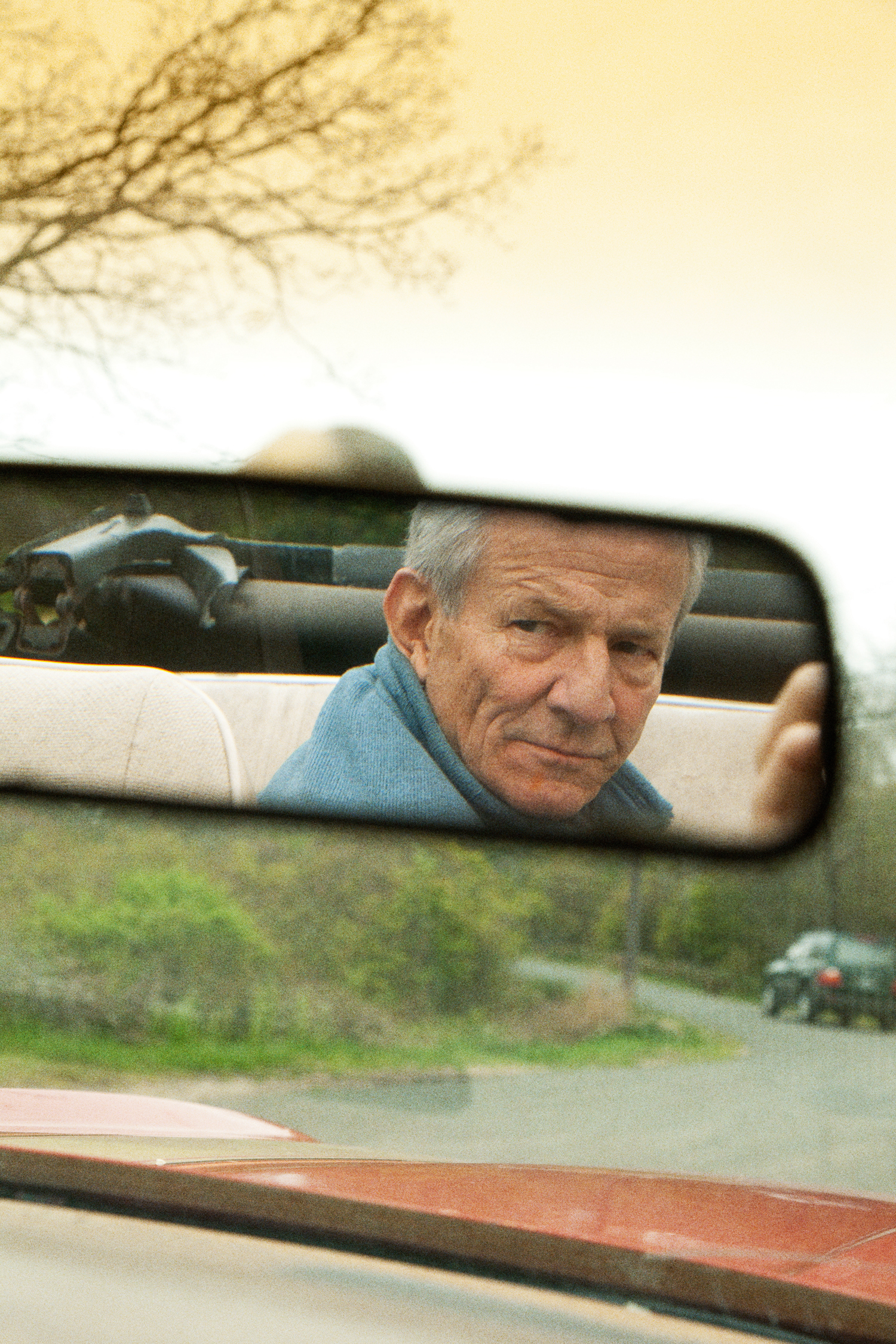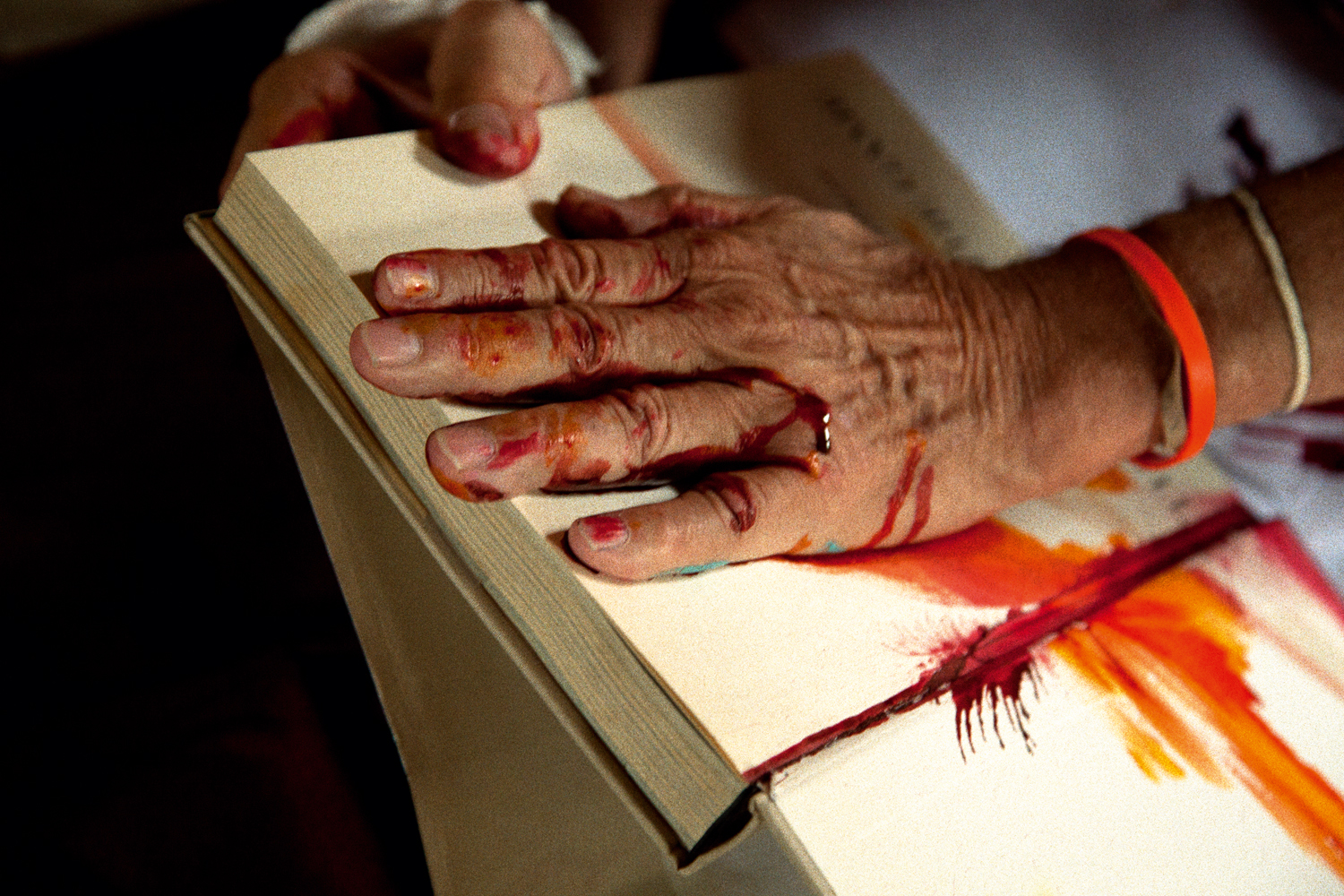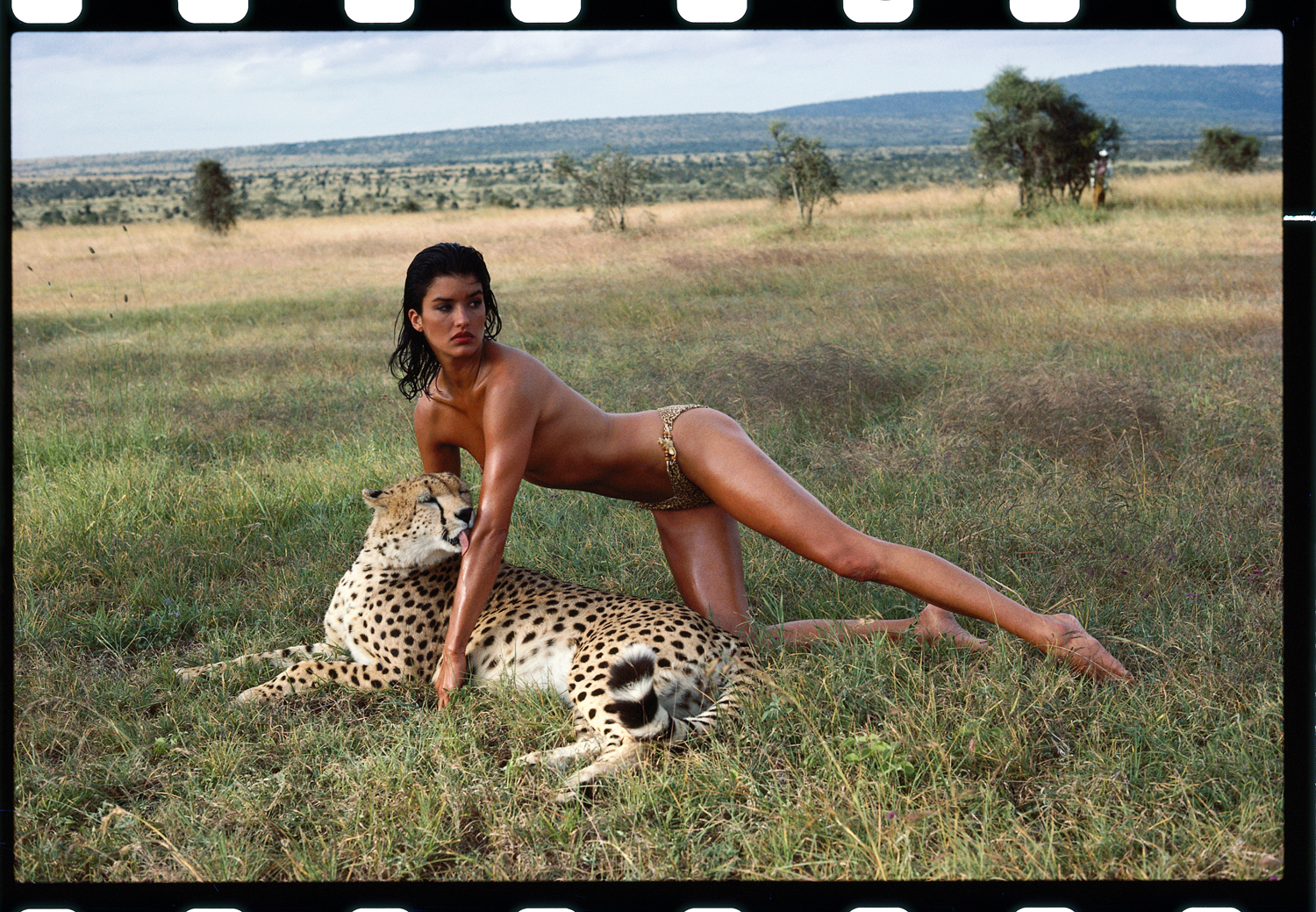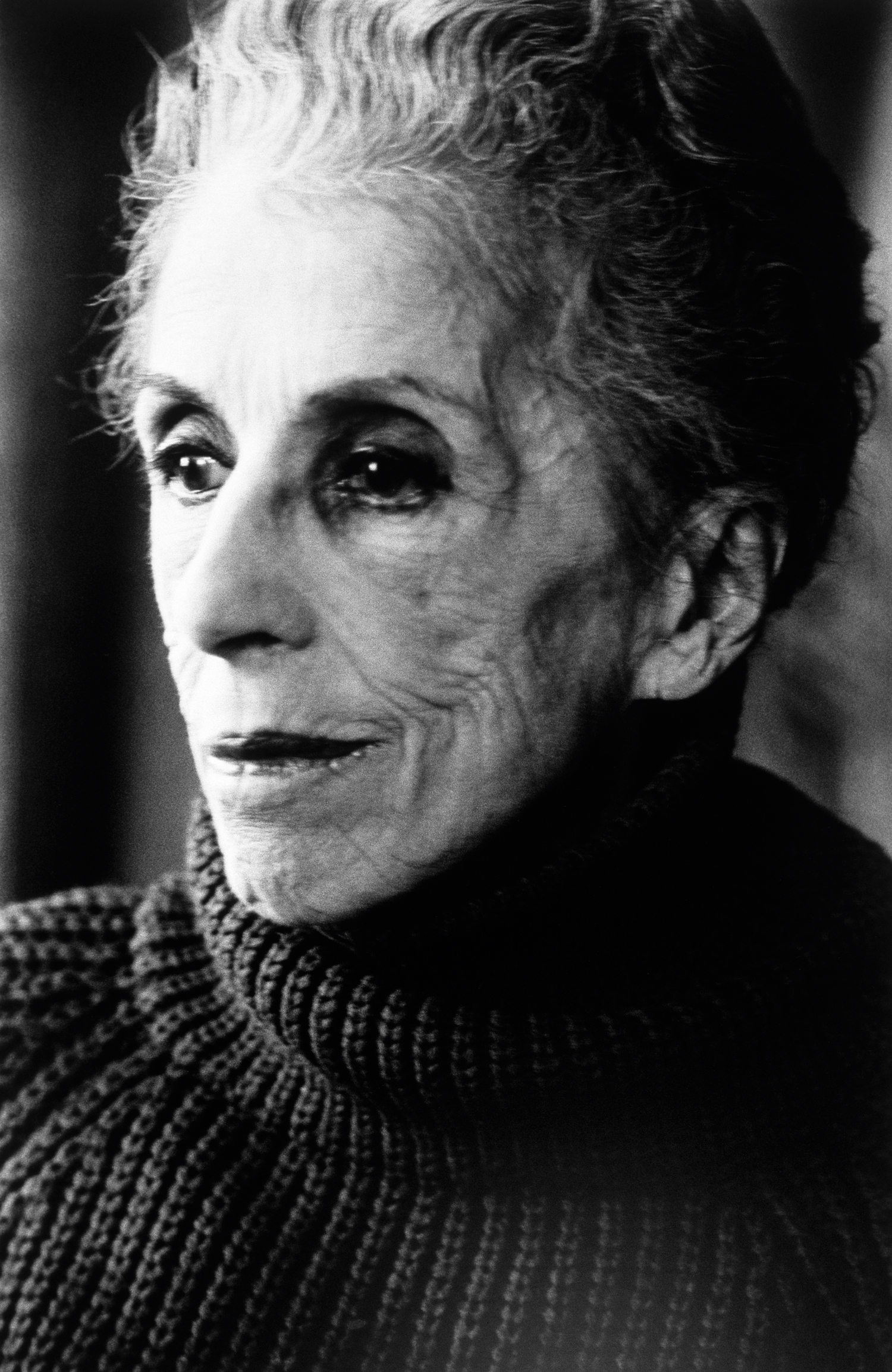Purple Magazine
— F/W 2012 issue 18
Peter Beard
 Peter Beard
Peter Beard
the only true paradise is a paradise we have lost
interview by BILL POWERS
portrait by RYAN MCGINLEY
All photos © Peter Beard, courtesy of the Peter Beard Studio / Art + Commerce
Peter Beard has been visiting and photographing the African wilderness since 1955. As the heir to a railroad fortune and a graduate of Yale University, where he enrolled as a pre-medical student, he became convinced early on that humans are the most threatening disease of all. “The idea of growing up has never occurred to me,” says Beard, who, after decades of travel and a self-imposed exile in the South of France, has recently returned to Driftwood Cove, Long Island. Now the prolific septuagenarian photographer is at work on several books, including a time capsule spanning the second half of the 20th century, and trying to make sense of the “tornado-like” changes that have swept his beloved Kenya.
 Peter Beard, Hog Ranch, 1986
Peter Beard, Hog Ranch, 1986
BILL POWERS — What are you working on at the moment?
PETER BEARD — A book. It’s a time capsule, really. I’m trying to look back over the ’50s — the beginning of my book The End of the Game, the ’60s — years of independence on safari — the ’70s, years of spoiling it … police raids, property grabbing — the ’80s, a continuing invasion by the lords of poverty and then the ’90s. I’m spending time on another book (Longing for Darkness),absorbing and making sense out of the tornado-like changes and the regrettable population dynamics imposed on the wildlife world by us, the most dangerous enemies of nature, busy pouring cement and cutting down trees. And I’ve been laid up with my new hip. I’ve been working on this other book with lots of subtitles, like Twilight on the Planet of the Apes. Yes, I’ve become a couch potato. The Land Rover days are over.
BILL POWERS — You’ve spent a lot of time living and working in the Hamptons. How did you end up there after all your trips around the world?
PETER BEARD — My father was born in Southampton, my mother in East Hampton, and I followed. My cousins, the Larkins, were neighbors and good friends with Jackson Pollock. They had several very long 18-inch high panoramic calligraphic works hanging up high near the ceiling as you entered. I remember, circa 1949-50, feeling that the Pollocks were a little too long (maybe 10 to 15 feet) and possibly a little decorative. Back then, the Hamptons were mostly famous for their rural integrity. But soon enough the galloping rot overran the whole enormous NYC / LA real-estate deal.Just yesterday this place where we’re sitting, called “Lands End,” was wild and authentic — where you could find actual Montauk and Shinnecock Indian arrowheads right over there on that whale-watch point. By the time I got out of the stress and density jail scene of Nairobi and into book production in jam-packed downtown New York, doing The End of the Game, Long Island was mercilessly subdivided by what H.L. Mencken called “The Libido for the Ugly.” At least we were lucky enough to have Roy and Dorothy Lichtenstein, Paul Morrissey, Andy Warhol, Willem de Kooning, Larry Rivers, John Chamberlain, and William Wegman with us for the flavor of artistic authenticity — the key word for what would soon be missing.
 Peter Beard
Peter Beard
BILL POWERS — How have the Hamptons changed since you’ve been there?
PETER BEARD — The painfully fancy “Cash Hamptons” were born. At that still historical time I visited Pollock’s humble studio in Springs and remember being incredibly impressed by a large Lee Krasner Abstract Expressionist work in the front lobby — not to mention Jack-the-Dripper’s droppings on the floor. There is a terrific book called To a Violent Grave: An Oral Biography of Jackson Pollock, in which you get to know about his crazy early days and all the people in the bars, the artists, and the competitive, intellectually stressed art reviews. For example, the now famous Clement Greenberg strategically saying all the right things about the new and chic, fancy-free, highly decorative Abstract Expressionists. He helped introduce money into this movement and, in the process, probably got quite a few freebies from the artists he promoted.
BILL POWERS — The money movement wasn’t confined just to the art world, was it?
PETER BEARD — No. The Beales sisters were rudely ousted from their super-rural, slightly overgrown historic home on Lily Pond Lane. The East Hampton fire department burst into their house and blasted away with a high-power fire hose all through the bottom floor, probably to aid another scaly real-estate deal. Aunt Edie died shortly after and young Edie left for Florida. I still have a movie of their fabulous place, complete with 52 cats and several raccoons.
BILL POWERS — Didn’t you find Larry Gagosian his house in Montauk?
PETER BEARD — Yes, I got him the property next to mine. He was anxious to build, “a little sea-captain’s cottage.” The end result — father and son wound up building a huge illegal fence that seemed to be about 10 feet high, with two enormous houses right on my property line. Not to mention the nervous New York City dogs barking all the time, more or less ending the friendship we had.
BILL POWERS — Your father worked on Wall Street, right?
PETER BEARD — I don’t know if you could call my very relaxed and congenial father a worker, but yes he had a desk at 14 Wall.
BILL POWERS — I’m just wondering if that fed you a sense of — as you yourself have been known to call it — “First World guilt” growing up?
PETER BEARD — Well, realistically, guilt never had a place in my selfish, one-track, wildlife-hungry mind. The idea of growing up has never occurred to me. My only real interests were in the faraway Pleistocene East Africa landscapes, which still contained all the most amazing animals you could imagine — like elephants and rhinos, and the maneaters. At that time, life was almost unbothered after eons of evolution. But soon busloads of tourists were complicating the once wild experience, and population pollution was soon to rule the day.
 Peter Beard
Peter Beard
BILL POWERS — What does that mean?
PETER BEARD — Too many people — overcrowding. I graduated from Yale with a great desire to leave that all behind. My final thesis was finished during a long safari into the northern frontier of Kenya in 1962, which was really the beginning of my education. The Darwinian actualities had arrived: Heart of Darkness realities and wildlife realities were more important to me than anything else. I was so happy to be there, far away from classical civilization, algebra, Latin, Greek, and homework — from up in the Aberdare moorlands, down to the wastelands around Lake Rudolf, and then coming back to the realities of population pollution, this time in the mismanaged elephant parks like Tsavo, where I was working in 1964-65.
BILL POWERS — Did you see things in Africa that made you skeptical about Western influence?
PETER BEARD — Well, I did see the Peace Corps in action — some volunteers were kicked out of Africa by Africans, others got an education. There could be a whole book about that movement. More or less everyone was beginning to realize that do-gooders were doing bad, dangling their pecking order “superiority” before the down-to-earth eyes of starving, tribal, indigenous peoples. A terrible mix of problems existed, like chronic poverty, malaria, worms, and everything that comes with drought. Kenya’s diverse and authentic cultures were interfered with and, without anyone daring to say it, wrongly encouraged to imitate and copy the fancy and usually embarrassing ways of modern intruders with their leopard-skin hat bands. As a tragic side note: one of the most popular missionary leaders, a woman, was taken aside as a special favor and circumcised. She was screaming and she died.
 Peter Beard’s diaries (since 1977), New York, 2005
Peter Beard’s diaries (since 1977), New York, 2005
BILL POWERS — In your experiences in Central Africa, what are the major problems that this region of the planet is facing?
PETER BEARD — When I first arrived in the ’50s, Kenya’s population was between five or six million. Now suddenly the figure is over 40 million in a land without obvious resources, without jobs, without educational infrastructure, in fact, without more or less anything except the loss of authenticity that was freely sacrificed for what was called progress. There isn’t an African exchange student alive who wouldn’t love to drop from memory those squalid mud huts, the long walks for water, posho and sikuma wiki for food, the desperate territorial struggles — the warlords, slave traders, child-slaves, child-soldiers, the medicines of the missionaries, without birth control, and all kinds of interruptive elements dumped on those not-so-innocent shores. Like when Kenneth Cole proudly flew into Haiti for three days, “to help,” amongst all those giant slums that have always been such a long way from our earnest proclamations of equity and equality. I suggest you read a great book called The Lords of Poverty: The Power, Prestige, and Corruption of the International Aid Industry, written by Graham Hancock, who was born in Africa.
 Janice Dickinson, Athi Plains, Kenya, 1985
Janice Dickinson, Athi Plains, Kenya, 1985
BILL POWERS — Speaking about books, do you like Dambisa Moyo’s book Dead Aid?
PETER BEARD — Of course, I loved it and I loved the title. I admired her academic record, going through Harvard Business School, etc. And, of course, she nails the do-gooders for doing bad. But in my harsh and unwelcome opinion she never really gets into the raw truth that existed in the enormous gulf between cultures. This complicated reality had been reported on much earlier in the writings of Joseph Conrad and the East African missionaries and explorers. Samuel White Baker, in his search for the Nile tributaries in 1866, summed up the curious problem when he headed a chapter with this observation: “The African Native is a curious anomaly … the good and the bad points of human nature bursting forth without arrangement like the flowers and thorns of his own wilderness.”
BILL POWERS — But there are charities that you do support, for example those that try to create land bridges for fenced-off animals in the wild, so they have safe passage during their migrations?
PETER BEARD — Of course I support those fence-destroying efforts largely begun in South Africa, where the wildlife management systems are far more evolved and intelligent than those found up north. Read Shiva Naipaul’s North of South — one of the greatest books on the humorous side of denatured Africa … You’ll laugh aloud.
BILL POWERS — You’re such a cheerful person, how is it you pour out all this environmental apocalyptic doom and gloom? In fact, why are you smiling?
PETER BEARD — I guess consciousness is a miracle. You really have to appreciate this. We don’t even know what consciousness is but we’ve got it … we’re blessed with it. Then you have the percentages of truth, so much is bad and yet the good shines through if you’re fair about it. When I say percentages, I mean the relative good that exists in relation to the horror, the horror. As we consciously attempt to have a happy life in what’s left of our global catastrophe on spaceship earth, one realizes everything is relative.
 Peter Beard with Salvador Dalí
Peter Beard with Salvador Dalí
BILL POWERS — Spaceship earth is an interesting metaphor. The planet has limits. Do you think people disregard overpopulation as a political issue because there’s nothing we can do about it?
PETER BEARD — Well, you put it perfectly. We have global warming to blame and then we have climate change — never mentioning that it’s our poisonous emissions that are responsible. We’re cunning and have many excuses. It’s not popular to talk about population pollution.
BILL POWERS — Are you nostalgic for a time when you enjoyed Africa?
PETER BEARD — It was paradise when I arrived in the ’50s — now it’s corrugated iron and garbage. Have you read Karen Blixen’s Out of Africa? There are stages of destruction. Slowly, slowly they multiply and we go forward. You can’t exactly destroy a habitat built up over millions of years in a few decades. You need, let’s say, 40 or 50 years to level the rural integrity, to really see what we are — not only the most dangerous species — we are the most sentimental with Walt Disney cartoons and fundraising headlines like Hug the Babies, Buy an Elephant a Drink, raising money always for lost causes because we love those fundraisers. The only true paradises are the ones we’ve destroyed. Anyway, I’ll be out of here in about 10 or 15 years, maybe 20. It’s been an amazing ride.
 Danielle Luna on burnt diaries, 1977
Danielle Luna on burnt diaries, 1977
BILL POWERS — Aside from Long Island, you’ve also been on a sort of self-imposed exile in the South of France. Was it nice to take a break from the USA?
PETER BEARD — Absolutely. Diversity in life is just as important as sticking to the same old things. Anyway,
I used to live near Marseille in the early ’60s and did a lot of collage paintings in my cousin’s house.
BILL POWERS — Were you friends with Helmut Newton?
PETER BEARD — Yes, that’s true since way back in 1962, when he graciously helped me with my first American collections in Vogue with Jean Shrimpton, Nena von Schlebrügge, and Wilhelmina. We were shooting winter clothes in the middle of July … 96 degrees Fahrenheit. We were up on the roof of a really tall building. It was insane. Helmut was dropping huge sheets of no-scene paper from a floor above us. The girls were sweating away below in heavy wool. Helmut Newton’s greatness was in his early photographs, more or less like William Klein and Bert Stern, who upon arriving at Condé Nast were soon ruined by the magazine. The same is not true when Diana Vreeland moved in. She was a classic energy force, a real upper, extravagant great taste and a humorous outlook, helping us all as best she could (despite Alex Liberman’s art department).
BILL POWERS — Was there tension between you two when Helmut Newton used your famous “Sticking Out of the Alligator” photo for one his female nudes in the same position?
PETER BEARD — Not at all. I was happy about that. I thought it looked terrific, and it was always on display in my tent until one day when a top African in the government sent his police force to conduct one of their famous raids — trying to grab my unspoiled property … again — and they saw the alligator/nude photo and arrested me for “trafficking in obscene literature.” It was Helmut who mailed me that photo. The nude was an opera singer with her head out of sight in the gator’s mouth.
 Elephant bones at Sala Gate, Galana (Tsavo Die-Off), 1976
Elephant bones at Sala Gate, Galana (Tsavo Die-Off), 1976
BILL POWERS — In your lifetime, who were the greatest beauties you came across?
PETER BEARD — So many. It’s a miracle, but you really have to hunt and work hard at getting the best out of all those fashion experiences. In the ’60s it was the Texan girls, like all the Hall sisters, and then after that Veruschka and the Germans. Then the Russians. But the top job for me was doing the 56-page Pirelli calendar in 2009. After it was completed we had to get interviewed by all the Pirelli-organized journalists about our extraordinary experience in Africa with all their girls, and they would keep asking, “What was the best part of doing that job?” Then the Italian art director would interrupt and shout, “It was the selection process!”
BILL POWERS — Was there one woman that really stuck out in your life?
PETER BEARD — The encounter with the most overwhelming and raging beauty of my entire lifetime was in 1957: Linda Christian. I was on spring break from Felsted School, leaving Tangier for Al Jazeera, with Arabic swords and expensive googaws … lots of customs trouble. A nearby traveler saw my predicament and came to my rescue. He spoke their language. Then from nowhere came the all-time devastating beauty of my sheltered life. There were no introductions. We were busy boarding the boat … #@!!% … too embarrassing for a photo, just goodbyes. Eventually on arrival at school, where I was a prefect overseeing the class below me, the morning newspapers arrived and the front page was headlined “The Kiss of Death.” The unimaginable beauty, Linda Christian, was giving a good luck kiss to Alfonso de Portago shortly before his deadly crash in the Mille Miglia, which killed 14 people. Then, more or less in the same year, in the hospital for special surgery for my crushed foot, I was in the room next to Suzy Parker, who had a terrible accident in Florida — she was the number-two beauty of all time in my early life, 1957-58.
 Portrait of Karen Blixen, 1961
Portrait of Karen Blixen, 1961
BILL POWERS — Have you had any other near-death experiences apart from the time you were stepped on by an elephant?
PETER BEARD — To be accurate, I was skewered through my left leg, and a section of my hip got crushed in seven places. Elephants don’t like to step on you. They’re very sensitive animals, believe it or not. The herd came in and was sniffing all around me — they could have stepped on me a hundred times but they didn’t. Gruesome detail can be found in the last chapter of my book Zara’s Tales.
BILL POWERS — Do you still see Mick Jagger?
PETER BEARD — Of course, whenever possible. I was lucky to have covered the Stones’ Exiles on Main Street tour through 40 or 50 states in 1972, and then also up in Canada, where Keith very narrowly escaped a very serious jail sentence. In fact, I did the cover for the live album of that Exiles tour, recorded by Marshall Chess at every gig — but in the end, their lawyers couldn’t get the rights!
BILL POWERS — You have a bit of a reputation as the Keith Richards of the art world for being indestructible. Is that a reasonable assessment?
PETER BEARD — I have no idea. I just read his epic book, Life, and loved it, so any connection with Keith is wonderful.
 Peter Beard’s house in Montauk shot by Ryan McGinley
Peter Beard’s house in Montauk shot by Ryan McGinley
BILL POWERS — Do you follow social media at all? Are we too obsessed with the iPhone and the Internet?
PETER BEARD — I don’t know anything about the computer people, but we seem to be entering a plastic robotic world. You can see it all on TV. Pale people sharing early-morning small talk. We’re on the organic machinery trip, surrendering our personalities, our authenticity, and our ability to speak truthfully. David Letterman and Anderson Cooper might be exceptions.
BILL POWERS — When you look back at the early times, does it feel like it was another life, like it happened to somebody else?
PETER BEARD — Absolutely. It’s a little like living in tornado country: things happened pretty fast and disppeared.
END
 Andy Warhol at home, 1972/1999
Andy Warhol at home, 1972/1999






























































































































































































